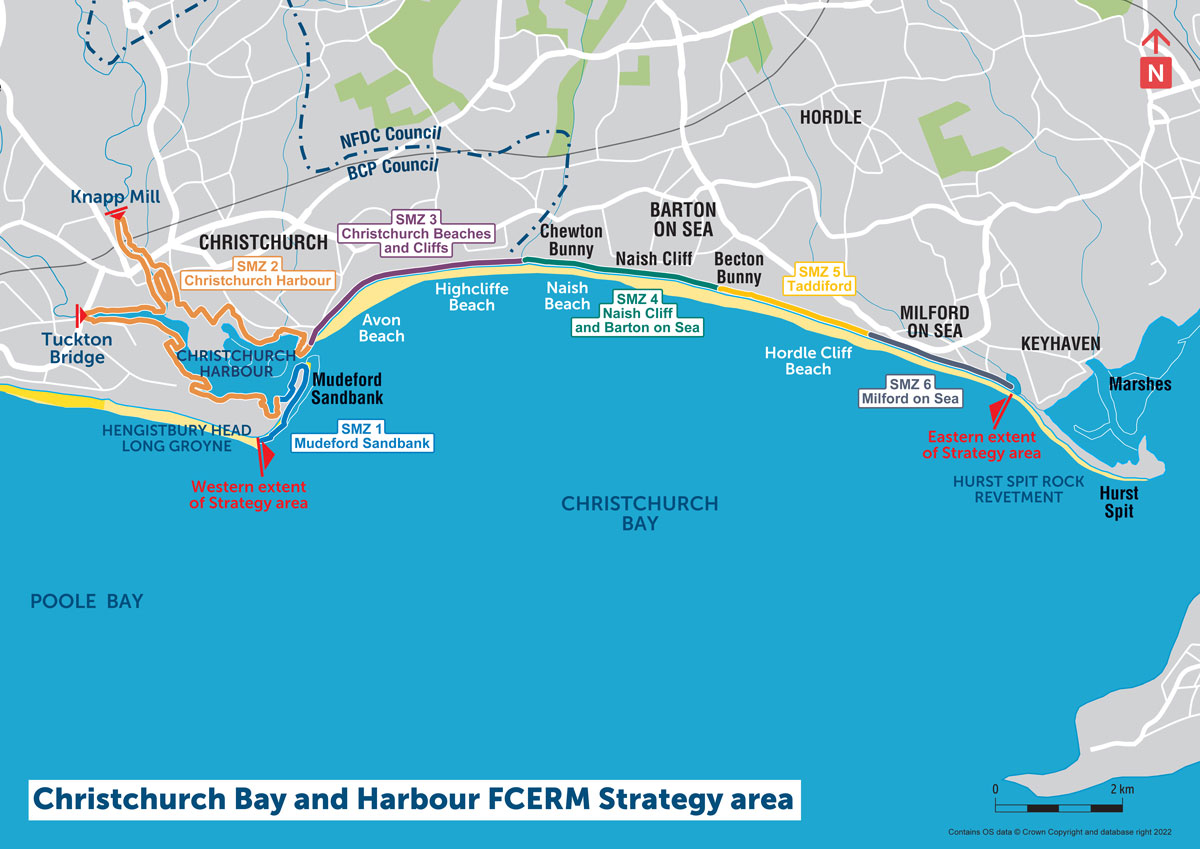
The project team thank those who have contributed so far to the development of our Christchurch Bay & Harbour FCERM Strategy
Following feedback from the fourth phase of engagement in December 2022, each of the short listed options were appraised to assess their economic, technical, environmental and social viability. The leading options were then identified for each of the 18 option development units and these proposals are the focus of Phase 5.
Over the summer (5th June-27th August) the public and key stakeholders are now invited to:
Take part in our online survey
from now until midnight on Sunday 27th August 2023
Download our information document and formally share your views with us at haveyoursay.bcpcouncil.gov.uk/christchurchstrategyphase5
Meet the team at one of our drop-in sessions
Tuesday 13th June
Milford on Sea Village Community Centre – drop in event
from 10am – 4pm
Sea Road, Milford on Sea SO41 0PH
Monday 19th June
Christchurch Library Octagon Space – drop in event
from 10am – 5.30pm
29 High Street, Christchurch BH23 1AW
Or join our online at Eventbrite
Tuesday 27th June
Public online evening event hosted by Dorset Coast Forum
7pm – 8.15pm
Free registration at www.eventbrite.co.uk/e/christchurch-bay-harbour-strategy-engagement-phase-5-public-event-tickets-642029987977
Please share the invitation with work colleagues and anyone in your community network that would have an interest.
- Consultation details & timeline is available at haveyoursay.bcpcouncil.gov.uk/christchurchstrategy
- A regularly updated project page (including access to A-Level & GSCE student learning resources) can be found at twobays.net/project/christchurch-fcerm-strategy
About the strategy
The Christchurch Bay and Harbour FCERM Strategy is being produced jointly by BCP Council and New Forest District Council, in partnership with the Environment Agency and AECOM.
The Strategy covers an area from Hengistbury Head Long Groyne to Hurst Spit, encompassing Christchurch Harbour, up to the tidal extents at Knapp Mill and Tuckton Bridge.
Baseline assessment calculations have revealed that if we ‘do nothing’ over the next 100 years, the coastal frontage will suffer around £1 billion in damages, which includes erosion risk to approximately 1,600 properties and coastal flood risk to over 2,200 properties, including both homes and non-residential buildings.







